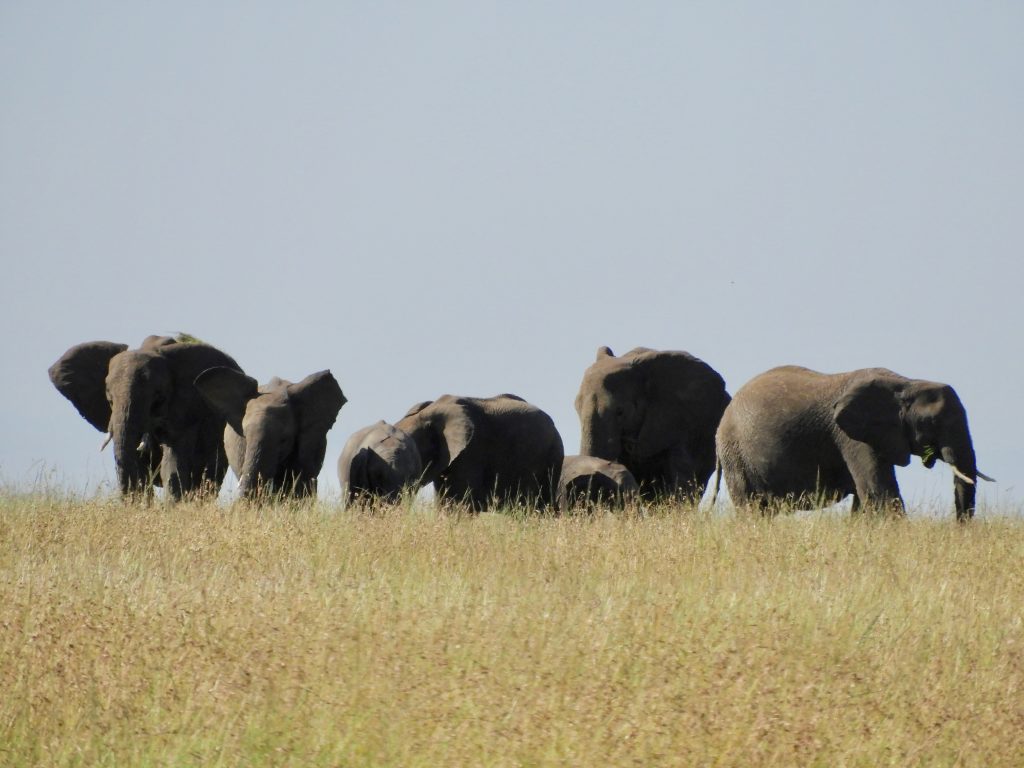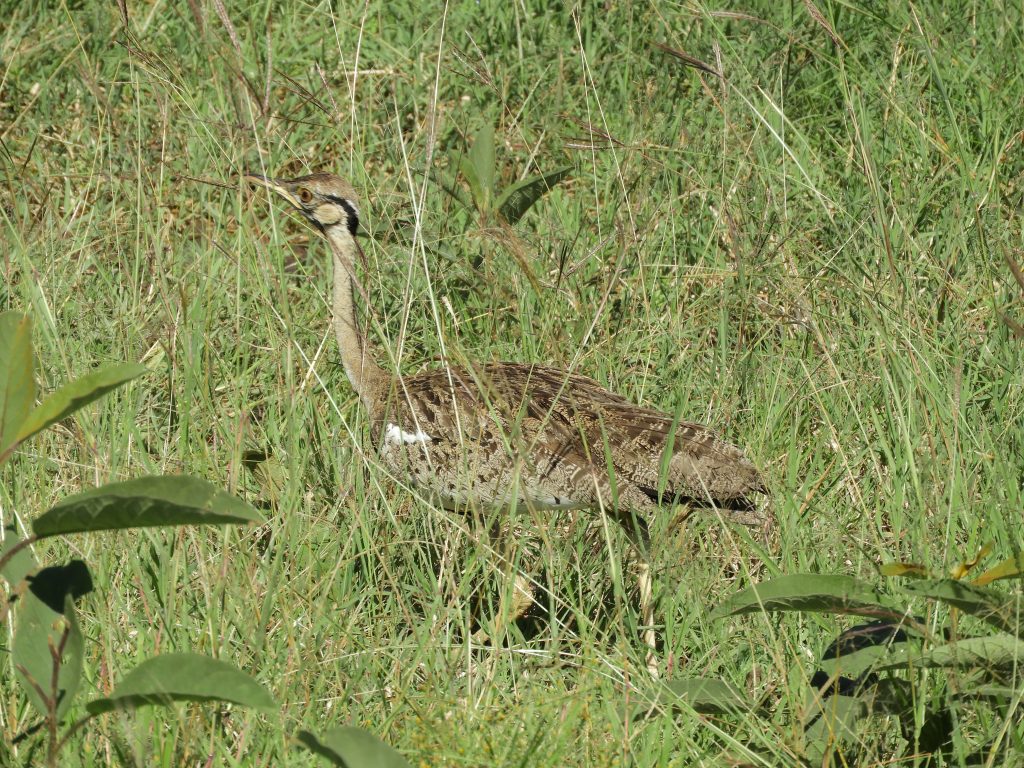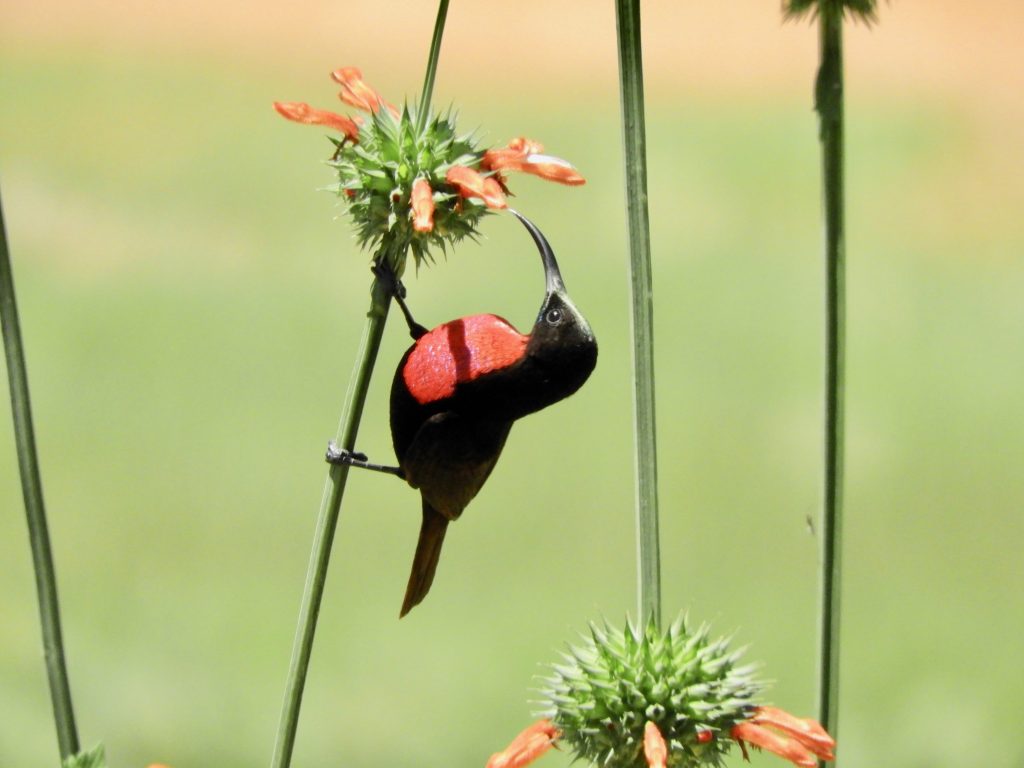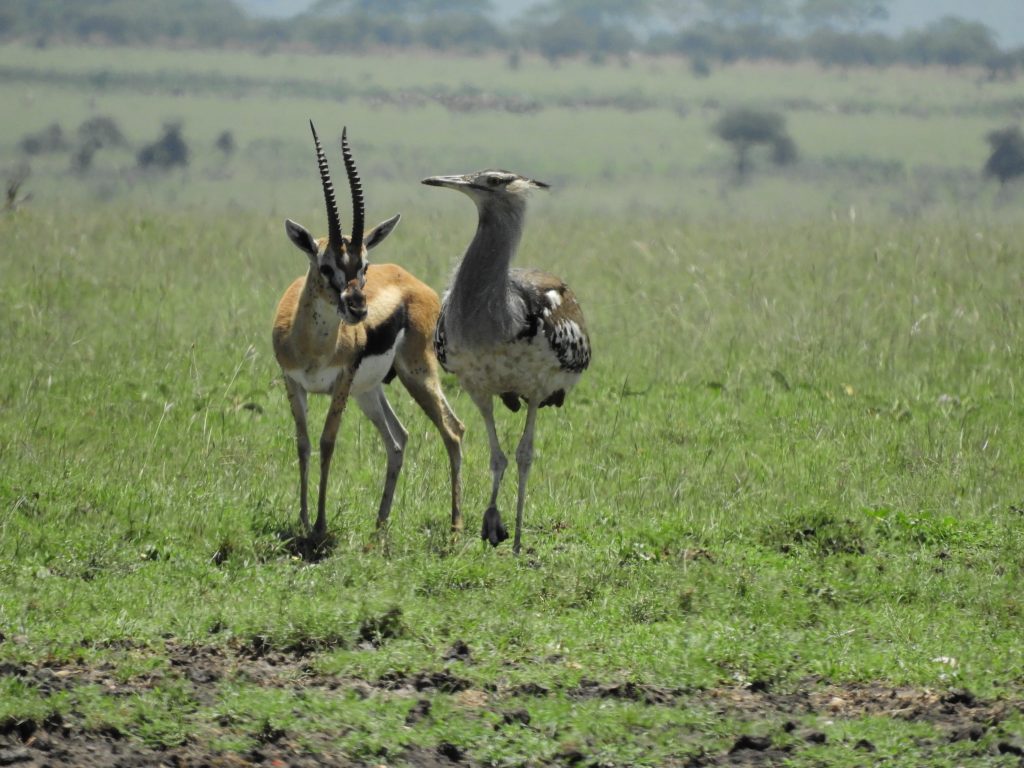
February 7 2020. Maasai Mara, Kenya. Bustards take a bit of believing: maybe not as much as Ostriches, but they’re large grasslands birds who prefer walking over flying, are still hunted in some low latitude countries and have been extirpated from much of their former range in northern Europe. This month I’ve had close encounters with three bustard species: Macqueen’s Bustard in the Arabian Desert and now Black-bellied and Kori Bustards here in Kenya’s Maasai Mara. It’s all rather exotic.

Today’s encounter with a Kori Bustard came towards the end of a day of birding a new-to-us expanse of African grassland. It was the quintessential Maasai Mara landscape of all around grass contained within distant escarpment faces and punctuated only by lone Acacia trees and groups of animals.
We were thrilled to spot a tree-top nest of White-backed Vultures. Not so long ago it was a common bird of the African grasslands but, like all Old-World vulture species, it is now rare and threatened with extinction through intentional poisoning and/or ingestion of second-hand, lethal-to-them medications in cattle carcasses.
Other notable birds this day were a low-flying Montague’s Harrier, a nectar-sipping Scarlet-chested Sunbird, two rather distant Secretary Birds, Lilac-breasted Rollers and a lark-like Pink-throated Longclaw.

Companion Alan was continuing his species-logging efforts while Malika (not a birder) was our driver. (Despite our best efforts at pointing out some spectacular birds, at the end of the day, the best Malika could do was acknowledge our excitement.)
Both Bustards were a wonder to see but the Kori especially so because of its novelty and size. It was keeping company with a small group of Thomson’s Gazelles. This picture makes it clear that not only is the Kori Bustard a big bird but the Thomson’s Gazelle is a pretty small gazelle, barely a meal for a family of lions.
